












































Since 1948, the Farnsworth has told the story of Maine through art. With your generous support, we look back on our legacy of celebrating the art of Maine. We look forward to the next 75 years of artists who illuminate the issues of our time, providing perspective and engaging us in new conversations. We need your help to continue our critically important service to our community.
In honor of our 75th Anniversary, the Fletcher Family Foundation has issued a challenge: they will match all contributions to the Museum Fund for Excellence dollar for dollar, up to $150,000!

Visit farnsworthmuseum.org to make a gift.
Gerry Isom President
Stephanie L. Brown Vice President
Lisa Garrison Vice President
Paul Carreiro Secretary
Gregory Knowlton Treasurer
Alexis Akre Alla Broeksmit
Sylvia A. de Leon Wendy Drummond Victoria R. Goldstein Lisa Kranc
Robert E. Kulp Jr. Betty G. Long Thomas Renyi James A. Rowan Kenneth Shure Ron Stern Susan Thomas Laura Wack
Presidents Emeriti Charles Altschul Richard Aroneau
Susan M. Deutsch H. Allen Fernald Anne W. Jenkins Frederic R. Kellogg
Trustees Emeriti Gail Catharine Bertuzzi Mazie Livingston Cox Betsy Kunkle John Rosenblum
Ex Officio
Christopher J. Brownawell Director
Farnsworth Art Museum
• Farnsworth Homestead
• William A. Farnsworth Library • Wyeth Center • Wyeth Study Center • Wyeth Research Center • Olson House • Gamble Education Center
• Julia’s Gallery for Young Artists
16 Museum Street
Rockland, Maine 04841
207.596.6457
farnsworthmuseum.org
WriteUs@farnsworthmuseum.org
Dear Friend,
Occasions like our 75th Anniversary encourage us to look back at our celebrated past and remember the people and events that shaped our incredible journey. They also inspire us to think about the future—and what a future it is!
Founded as a small art museum in midcoast Maine, the Farnsworth of today serves a national audience with its outstanding collection and plays a vital role in our community, our state, and the nation. We’re planning a spectacular year for you—one that tells our incredible story and will delight and inspire.
As you’ll read in this issue of our magazine, our 75th Anniversary exhibitions are already being installed. We pay homage to Louise Nevelson, who grew up in Rockland to become one of our nation’s most important sculptors. We celebrate the Farnsworth at 75 to spark new conversations in American art by juxtaposing historic works with contemporary art. The museum is also back to its important work with students and teachers on a program that places art at the center of student learning.
What is yet to come in our Anniversary celebration? More new exhibitions—including Edward Hopper and Andrew Wyeth: Rockland, Maine and Alvaro’s World: Andrew Wyeth and the Olson House—that will transform every gallery at the museum, providing you with a completely new art experience. A rich and very full calendar of programs, workshops, and events for members and the community. And, of course, no anniversary would be complete without a spectacular summer party! Mark your calendar for July 14 and join us as we celebrate 75 years of art at the Farnsworth Art Museum.
Louise Nevelson (1899–1988)
Seated Figure, cast stone

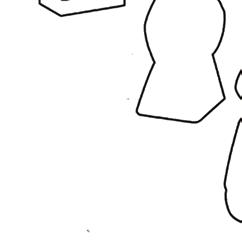

Small Stele, terra cotta
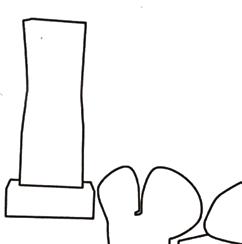
Night Form, terra cotta

Woman with Headdress, terra cotta
Mother and Child II, terra cotta
Child, terra cotta Created between 1946–1951 at the Clay Club, 8th Street, NYC, Gift of Louise Nevelson, 1981.11
Estate of Louise Nevelson / Artists Rights Society (ARS), New York


As always, thank you for your generous support and encouragement. My best wishes to you and your family for the year ahead! MAGAZINE STAFF Maggi Blue
J. Brownawell, DirectorWhen I was growing up in Rockland from grammar school to high school, there was no museum. One of the great joys of my life is that we have a first-rate one now—a beautiful building that encloses creative works that can stand with the great ones. That is something I had not expected in my wildest dreams to find in a town in Maine—that jewel that shines.
~ Louise Nevelson
Louise Nevelson (1899–1988) wrote these words following an exhibition of her work at the Farnsworth Art Museum in 1985. In the four years preceding the show, Nevelson donated eighty-seven pieces of art to the institution, including fifty-six of her own works. Her brother, Nathan Berliawsky, and sister, Anita Berliawsky Weinstein, also gave significant gifts, making the Farnsworth’s Nevelson collection the second largest holding of the artist’s work after the Whitney Museum of American Art, in New York City.
The exhibition Louise Nevelson: Dawn to Dusk, newly installed in the Nevelson-Berliawsky Gallery on the museum’s sixth floor, traces the artist’s formative years to her emergence as a sculptor of international renown. It is perhaps fitting that the Farnsworth’s holdings are especially strong in her early works, as it was in Rockland that she spent her formative years and discovered her love of art.
Born Leah Berliawsky in the autumn of 1899 in Tsarist Russia, near Kyiv in what is now Ukraine, Nevelson immigrated to Maine with her family in 1905 to escape the persecution of Jews under the Imperial regime. At an early age, she received recognition from her schoolteachers as “the artist.” She later said, “From the
first day in school until the day I graduated, everyone gave me 100 plus in art. Well, where do you go in life? You go to the place you get 100 plus.”
In 1920, Louise married Charles Nevelson, a shipping company executive from New York City who had business interests in Rockland. Her move to New York following their marriage was instrumental to her growth as an artist. She called it “a city of collage…the whole thing is magnificent… There’s no place like it.” Upon her arrival, she began vigorously pursuing her interest in the arts, studying painting, acting, dance, and voice. After her son Mike, born in 1922, had reached school age, she enrolled full-time in the Art Students League, resolving to pursue a career in art.
At the League, Nevelson studied painting with Kenneth Hayes Miller, a well-known and respected artist. He taught the fundamentals of oil painting while encouraging his students to find their own artistic voice. Female Nude (c. 1929), an example of Nevelson’s student work, shows a classically posed model with a cluster of easels in the background. Although she soon rejected Miller’s traditional style, she embraced his example of art as a way of life.
Her drawing instructor at the League was Kimon Nicolaides, author of the book, The Natural Way to Draw. Nicolaides emphasized gesture or “scribble” drawing, where “you feel the movement of the whole.” Nevelson excelled at the spontaneity and speed of this drawing style and used it throughout her career. Of note in the early drawing, Four Figures (c. 1930) is the stack of three heads to the left of the central figure, a reference to the totem form of ancient Mayan, African, and Northwest Coast cultures. The totem form would become an important compositional device in her later sculptures.
In September 1931, Nevelson traveled to Munich, Germany, to study with the influential artist and teacher Hans Hofmann, who she believed was “the only person who could explain and teach Cubism, Picasso, and Matisse.” When she arrived in Germany, Hitler was gaining increasing power, and she found Hofmann distracted by finalizing his plans for emigration to America. Although she studied with him briefly, she credits Hofmann with introducing her to the “push and pull” of negative and positive spaces. This concept was of critical importance to the development of her mature work.
Louise Nevelson (1899–1988)
Woman with a Red Scarf (Self-Portrait), c. 1947 Oil on board, 47 3/4 x 23 3/8 inches

Bequest of Nathan Berliawsky, 1980.35.24
© 2022 Estate of Louise Nevelson/ Artists Rights Society (ARS), New York
After a year of traveling in Europe, visiting museums in Rome, Pisa, Florence, and Paris, she returned to New York in the fall of 1932 and re-enrolled in classes at the Art Students League. Now separated from her husband, she moved to an apartment at 1237 York Avenue, where York Avenue, New York City (1933), was painted. One of her only two known cityscapes, the painting is in the Cubist style, with the three-dimensional forms of the buildings interpreted as flat shapes conforming to the two-dimensional picture plane.
That same year, Nevelson began studying with the emerging sculptor Chaim Gross, who, along with artists William Zorach and Robert Laurent, was championing a return to direct carving in wood and stone. While she later recounted that she knew from an early age, “I want to be a sculptor; I don’t want color to help me,” she continued to practice both painting and sculpture until the early 1950s. “Making the transition to sculpture wasn’t difficult at all,” she said. “I don’t see much difference between one medium or another.” The wood relief Female Figure (c. 1936) is a rare example of her efforts at direct carving.
Many of her early sculptures are semi-abstract animals and figures in terra cotta, plaster, or “tattistone,” an aggregate of marble dust, color, stone chips, and hardening agents, named for the sculptor Alexander Tatti, whom she studied with at a WPA-sponsored workshop. Bronze Bird (1952) is one of her few pieces from this period to be cast in bronze. It is the first work by Nevelson to enter the Farnsworth’s collection, a gift from the Federation of Modern Painters and Sculptors in 1955.
Louise Nevelson (1899–1988)
Female Nude, c. 1929 Oil on canvas, 30 x 22 ½ inches Gift of Louise Nevelson, 1981.2.1

Louise Nevelson (1899–1988) Woman, Child, and Cats, 1946 Oil on canvas, 33 5/8 x 39 3/8 inches Gift of Nathan Berliawsky, 1977.36 © 2022 Estate of Louise Nevelson / Artists Rights Society (ARS), New York

Her paintings are primarily figurative; many are heavily textured with thick layers of paint applied with a palette knife. One of the most sculptural is Figure in Blue Shirt (1952), in which the painted topknot of hair projects nearly an inch from the surface of the canvas. In this work and the painting, Woman, Child, and Cats (1946), the background of stacked rectangles foreshadows her later wooden wall constructions.

One of her most striking self-portraits is Woman in a Red Scarf (c. 1947), in which she depicts herself encircled by a red line that binds her hands, an anguished stance for an artist. This emotional portrayal may relate to her dealer and close friend Karl Nierendorf’s sudden death in October 1947. Nierendorf was among the first to show her work, and his death threw her into a period of despair. The cast stone sculpture, Figure of a Woman (c. 1947) is similar in composition to the painting, with the torso represented as an inverted triangle and opposing diagonals emphasizing the tilt of the head.
In the spring of 1950 and winter of 1951, Nevelson realized a long-held dream of visiting the Mayan ruins in Mexico and Guatemala. She stated, “This was a world of forms that at once I felt I could identify with…a world of geometry and magic.” Upon her return, she created a series of twenty-seven etchings, including Ancient One, Sunken Cathedral, and Ancient Splendor (1952–54), inspired by the ancient ruins. A selection of these prints and new black wood sculptures were included in her 1955 exhibition, Ancient Games, Ancient Places, at Grand Central Moderns Gallery in New York—the first of several career-defining shows.






Her following three shows at Grand Central Moderns marked progress toward her mature style, culminating with Moon Garden + One in 1958. For this show, Nevelson created a totally black environment that included her first wall construction, Sky Cathedral (Collection of the Museum of Modern Art), a monumental piece composed of nearly sixty stacked boxes. Art critic Hilton Kramer praised the show, describing her works as “appalling and marvelous, utterly shocking in the way they violate our received ideas on the limits of sculpture...yet profoundly exhilarating in the way they open an entire realm of possibility.”
The critical success of Moon Garden + One confirmed Nevelson’s stature as an artist of national importance. The following year, she was invited to participate in Sixteen Americans at the Museum of Modern Art. For this, her first major museum exhibition, she created Dawn’s Wedding Feast, an all-white environment suggesting a nuptial ceremony. The slender, vertical assemblage Dawn Column I (1959) was one of ten “witnesses” that stood on a narrow platform flanking the altar. After years of using only black, Nevelson’s use of virginal white stunned her audience. The show represented a new beginning for her, “a kind of wish fulfillment, a transition to marriage with the world.” After nearly thirty years of struggle, Louise Nevelson had become the “grande dame of contemporary sculpture.”


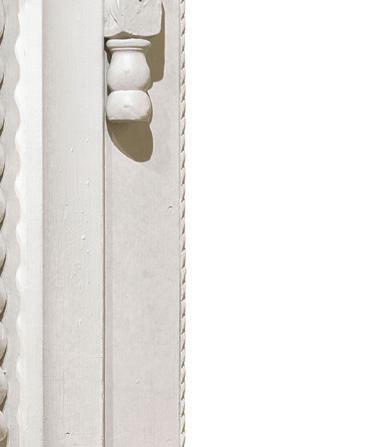


Suzette McAvoy is an independent curator, arts writer, and museum consultant with more than thirty-five years’ experience in the field of fine art and museums. She is the former Executive Director of the Center for Maine Contemporary Art, and previously served as Chief Curator at the Farnsworth Art Museum. She has curated more than sixty exhibitions on the art and artists of Maine.

The Farnsworth’s 75th Anniversary presents an opportunity to contemplate the role of an art museum in the twenty-first century, especially in my position as the museum’s new Chief Curator. At the time of this writing, my tenure totals three months—a blink of time to observe, study, and learn about the Farnsworth’s history, its collection and exhibitions, educational programs, and community, all of which will serve as informational guides for the future.
Yet as we navigate forward, each step must be intentional and strategic, aligning with the early vision of founder
Lucy Copeland Farnsworth, as presented to the group of advisors who had the great responsibility of establishing the museum’s initial collection. From 1943 to 1948, even before the museum opened its doors to the public, the consultant Robert Bellows, then an architect and chairman of the Boston Arts Commission and a trustee of the Boston Athenaeum, along with Philip Hofer, Merle James, and Stephen Wheatland, acquired 915 objects for the future museum. Hofer, James, and Wheatland were not only versed in arts from diverse backgrounds, but were also longtime summer residents of the Rockland area. Now, seventy-five years later, these artworks by Eastman Johnson, Andrew Wyeth, Maurice Prendergast, and Winslow Homer, among many others, may be recognized or categorized as part of the museum’s historic founding collection. The works also directed the collection’s focus to Maine.
I find great joy in familiarizing myself with the museum’s history, whether reviewing ledger
Andrew Wyeth (1917–2009)
Clouds and Shadows, 1940 Watercolor on paper 18 x 22 1/8 inches

Museum purchase, 1944.155
© Andrew Wyeth / Artists Rights Society (ARS), New York
1




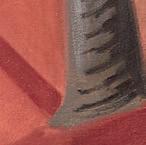









books that carefully documented the advisors’ early acquisitions or anecdotal musings about the process, or studying recent acquisitions and the museum’s exhibition history. In 1944, for instance, Bellows purchased four works by a twenty-seven-yearold Andrew Wyeth from Macbeth Gallery, and quipped about identifying “good ones before they became too famous.”1 For me, Bellows’s comment is less about pinpointing the next “it” artist, and more about recognizing an artist at an early stage of their career, and instilling confidence in that artist with a museum purchase.

As a collecting institution, the collection is the Farnsworth’s greatest strength and ongoing responsibility. It presents an evolving opportunity to encourage curiosity and interest. Today, the museum’s collection consists of over 15,000 works in all media, and is recognized as one of the finest repositories of American art. The museum has always collected work by living artists—the “then little-known” Andrew Wyeth of 1944 is one early example of a living artist whose works today are considered some of the most celebrated historic objects in the Farnsworth’s collection.2
In 2022, the Farnsworth made significant strides to advance its collecting priorities and broaden its understanding of artists living and working in Maine today. In 2023, the exhibition Farnsworth at 75: New Voices from Maine in American Art highlights the growing diversity of the collection and Maine, underscoring new understandings of the relationship between cultural identity, history, and place. For me, the institution’s mission— “celebrating Maine’s role in American art”—encompasses who we are, what we do, and why we do it. The many artists on view in Farnsworth at 75 are a testament to a myriad of artistic pursuits across time and media. This exhibition bolsters various thematic narratives and stylistic movements by pairing more recent acquisitions with works that have entered the collection in years prior.
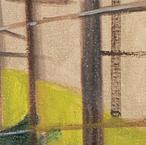
2 Ibid, 20.


Lois Dodd (b. 1927)














The Painted Room, 1982






Oil on linen, 60 x 50 inches
Gift of the American Academy and Institute of Arts and Letters, New York: Hassam, Speicher, Betts and Symons Funds, 1991.7



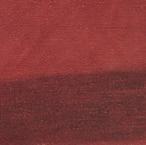













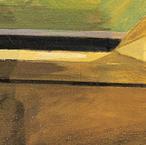




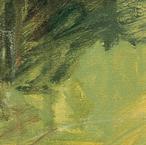






















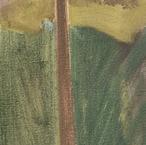
































© Lois Dodd




Maine—as a subject and source of inspiration for artists—is a hallmark of many paintings in the Farnsworth’s collection. Observing nature, returning to it day after day, continues to fascinate the minds of many artists, residents, and visitors linked to our beloved state. Artists translate the world in which we live in unpredictable ways. Studying their objects allows us to be transported to a place of wonder, where our imagination and senses run wild, giving viewers the opportunity to see familiar objects anew, with fresh interpretations.
There are artistic liberties at play in many new works of art in the collection, too. Lois Dodd, for example, paints from observation, yet she is most notably recognized for her interiors that include references to the natural world. The Painted Room depicts a mural of painted woods across from the artist’s summer home, in Cushing, Maine. In it, Dodd combines interior worlds and the natural world, distinguishing the two with visual cues, such as a light bulb hanging from the ceiling and yellow curtains that frame the window and the distant yard.
Since 1995, Ann Craven has been recording the moon in paint, as in her Moon (Pink Harvest Moon, Bright Red Dancing Trees, Cushing), of 2021. Her process consists of sketching small studies before enhancing them in larger paintings. When she first arrived in Maine, she began “chasing the moon” on Lincolnville Beach before finding a home on the banks of the St. George River, in Cushing.
It is astonishing to ponder these acts of creation: two artists painting forested views outside their windows in Cushing, resulting in two entirely different renderings. This is the power and potential of the Farnsworth’s collection—to share stories, past and present, and to amplify the voices of artists during their lifetime. I hope you, our community, will visit us during our 75th Anniversary and re-engage with our collection, which will be entirely reinstalled for this monumental occasion.

Founded as a bequest of Lucy Copeland Farnsworth in honor of her father, the museum opened its doors in 1948. Today, the Farnsworth collection includes more than 15,000 works by 1,300 artists and two historic sites—the Farnsworth Homestead and the Olson House. The museum is a key tourist attraction for our state and makes a $58 million economic impact on our region. We celebrate Lucy’s vision to create an enduring institution that provides so much to so many. Experience new exhibitions in every gallery. See 50 new acquisitions by living artists in all media. Celebrate at our 75th Anniversary Gala on July 14. Join us for our richest offering of community and member events and programs yet.
For Kay Lehr, visiting museums has been a lifelong pursuit. At the age of five, an architect neighbor introduced Kay and her sister to the Art Institute of Chicago, where they would go on visits with his children. The neighbor would bring a blanket and they would pretend they were on a picnic, and he would guide them in looking at the paintings. Kay was “hooked”!
Since then, Kay has visited museums all over the world, collected art, and served as a docent and board member at several museums. Currently a docent at the Farnsworth, Kay especially enjoys attending lectures by staff, artists, and curators, which allow her to learn even more about the museum’s collection. She values the “beautifully curated” exhibitions the museum brings to the midcoast, and the Farnsworth’s importance as an economic engine for the community. It does “so much for so many!”
Originally from Chicago, Kay now resides in Rockland, Maine and Incline Village, Nevada. She is an inaugural member of the Patrons and the Lucy Farnsworth Circle.

Turn your passion for art into cultural exploration. Get involved! Contact Ann Holton: aholton@ farnsworthmuseum.org or 207.596.6256 for information about additional giving opportunities.
When Kirsten Surbey came to Maine in the winter of 2012, she knew she wanted to settle here. For Kirsten, Maine’s natural beauty and the creative, hardworking community in which she lives is life-affirming. “Everyone is a maker,” she says, “whether painting, knitting, throwing pots, or building boats—everyone is industrious.” She loves the way the Farnsworth champions Maine’s history of art and artists.
“I want to have fun visiting galleries and museums with my kids,” she says, noting they loved the Ashley Bryan exhibit this summer. “Visiting a museum can give you a mental reset, just as you get in nature. It can shift your perspective, make you feel connected, and inspire. I think it is important as a community to show we value these spaces.”
Born in Washington, DC, Kirsten Surbey is the manager of Page Gallery, in Camden, Maine. Kirsten is a driving force behind the reimagined Collective, the next generation of Farnsworth supporters aiming to broaden their connection to the arts.
The Collective sponsors events and programs designed to bring artists together with their peers and patrons. To join, contact Anna Sideris: asideris@farnsworthmuseum.org or 207.596.6457.

Museums engage and inspire. They teach and enlighten. At the Farnsworth Art Museum, we take that responsibility one step further by partnering with area schools on arts integration programs that happen in the museum and in the classroom. It may surprise you to learn that our partnerships with area schools and teachers make a $2 million direct investment in local arts education.
Recently, we launched an interdisciplinary arts integration and community engagement program for middle- and high-school students in midcoast Maine. “ARTS@theIntersection” has roots in our long-term Arts-in-Education “Stories” program, and meets teachers and students where they are—a very different place than several years ago.

Dr. Alexis M. Saba, the museum’s new school programs manager, leads the partnership. Saba brings experience working with educators and youth on topics related to critical thinking, social justice, and gender in education.

“Bringing the arts to any subject allows students to express themselves creatively, engage differently, and think critically about new topics,” said Dr. Saba, who has seen art transform learning as a teacher, a researcher, and as a collaborator with educators and schools.
To better address emerging needs in the aftermath of the pandemic, Dr. Saba and the Learning & Engagement team visited classrooms and worked extensively with educators to test different approaches. Teachers reported increasing pressures and expectations coupled with fewer resources. Youth across the nation have experienced lingering anxiety and depression due to physical and social isolation. Teachers emphasized that students now have additional needs for relationship-building, trust, social-emotional learning, and confidence-building skills to prepare them for the next steps in their academic journeys.
“ARTS@theIntersection begins with foundational workshops at the museum that support critical thinking and civic engagement skills,” explains Saba. “The work we’re doing fosters students’ creative connections and addresses the effects of isolation.”
“We pair student groups with local artists who are selected for their teaching abilities as well as their experience working in multimedia formats. Many of our teaching artists are also advocates for change,” said Saba.
A unique and exciting component of the program will be a dedicated study and gallery space—opening this spring— where students can explore art inside the museum and work up close with Farnsworth collections, some of which are in storage and seldom seen by the public.
The program culminates in a multimedia exhibition featuring student-driven work for the participants' friends and family and museum visitors. Stay tuned for opening dates and related programming. We can’t wait to see what they create, and to share our learning with you!
The Farnsworth Learning & Engagement team presents a vibrant public education program including workshops, artmaking, in-thegallery events, tours, and interpretative programming. To learn more or support our education efforts, contact Ann Holton at aholton@ farnsworthmuseum.org.


Students visit with local community partners—including Herring Gut Coastal Science Center, The Landing Place, and The Telling Room—for expeditionary learning experiences.
207-596-6457
farnsworthmuseum.org
membership@farnsworthmuseum.org
Support the museum through your business or corporation and receive valuable recognition opportunities.
Support the Farnsworth in its mission to celebrate Maine’s role in American art and receive free admission and other important benefits all year long.



Leadership-level members support a season of exhibitions and related educational programs and enjoy behind-thescenes tours and exclusive benefits.
Annual donors keep exhibitions strong, education accessible, and fund our commitment to deliver free community programs as well as free admission to Rockland residents.
Donations of art, or contributions to purchase art, expand our collection. Donations of artwork are reviewed for acceptance by our curatorial team and board.
Provide a lasting legacy at the museum through a bequest, lifetime, or estate gift.
Establish a new fund, or add to an existing fund, to provide a reliable source of annual income that sustains the Farnsworth forever.
16 Museum Street



Rockland, Maine 04841 farnsworthmuseum.org
